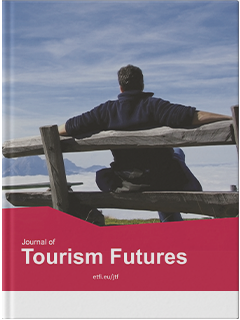Analyzing the main determinants of being a cultural traveler: the case of domestic cultural trips in Spain
IF 5.8
Q1 HOSPITALITY, LEISURE, SPORT & TOURISM
引用次数: 0
Abstract
PurposeAnalyzing the main determinants that lead a traveler to make a cultural trip is an important issue to understand where the cultural tourism market is going, and where the decision-makers should intervene. This study helps develop a profile of cultural tourism participants, and underscore the changes in this market niche. This information is crucial for the successful marketing and development of cultural tourism in the future.Design/methodology/approachThe authors estimate a binary probabilistic (logit) model to determine the probability of a tourist to travel for cultural reasons, as a function of the traveler's socio-economic characteristic (e.g. age, gender, income or level of studies), of the trip-related characteristics (e.g. distance traveled to destination or mode of transport) and of the characteristics of the province of destination (e.g. weather conditions or existence of cultural sites at destination).FindingsThis study’s estimates reveal that middle-aged individuals, with a higher level of studies and with a medium level of income show a higher propensity to travel for cultural reasons. The latter finding evidences that cultural tourism has evolved from a niche market reserved for an elite clientele to a much wider range of people. Additionally, cultural travelers tend to travel statistically much longer distances. They are less prone to visit crowded destinations, prefer visiting destinations with important cultural sites, and are less sensitive to weather conditions. Finally, the authors discover a complementary effect of culture tourism and other activities carried out during the trip such as visiting cities or theme parks; and a substitution effect with “beach-and-sun” tourism.Practical implicationsThe information given in this study can be crucial for the successful marketing and development of cultural tourism in the future. A better understanding of the main determinants of being a cultural traveler implies a better and a more efficient implementation of managerial and political measures to attract a kind of tourism characterized by a high spending capacity.Originality/valueDiscovering the main determinants of being a cultural traveler is a topic scarcely treated in the literature. This study has the main originality to include characteristics of the destination (pull factors) to explain the individual's decision to take a cultural trip. Moreover, the authors work at a provincial (NUTS-3) level of analysis, which makes this study original in the field of cultural tourism.分析文化旅行者的主要决定因素:以西班牙国内文化旅行为例
目的分析导致旅行者进行文化旅行的主要决定因素是了解文化旅游市场走向以及决策者应该干预的重要问题。这项研究有助于建立文化旅游参与者的档案,并强调这一市场利基的变化。这些信息对于未来文化旅游的成功营销和发展至关重要。设计/方法/方法作者估计了一个二元概率(logit)模型,以确定游客因文化原因旅行的概率,作为旅行者的社会经济特征(如年龄、性别、收入或研究水平)的函数,与旅行相关的特征(如前往目的地的距离或交通方式)和目的地省份的特征(例如天气条件或目的地文化遗址的存在),学习水平较高、收入水平中等的人出于文化原因表现出更高的旅行倾向。后一项发现证明,文化旅游已经从一个为精英客户保留的利基市场发展到更广泛的人群。此外,从统计数据来看,文化旅行者的旅行距离往往要远得多。他们不太倾向于去拥挤的目的地,更喜欢去有重要文化遗址的目的地旅游,对天气条件也不太敏感。最后,作者发现了文化旅游与旅行中进行的其他活动(如参观城市或主题公园)的互补效应;以及与“海滩与阳光”旅游的替代效应。实际意义本研究提供的信息对未来文化旅游的成功营销和发展至关重要。更好地理解文化旅行者的主要决定因素意味着更好、更有效地实施管理和政治措施,以吸引一种以高消费能力为特征的旅游业。原创性/价值发现作为一名文化旅行者的主要决定因素是文献中很少涉及的话题。这项研究的主要独创性在于包括目的地的特征(拉动因素)来解释个人进行文化旅行的决定。此外,作者在省级(NUTS-3)层面进行了分析,这使得本研究在文化旅游领域具有独创性。
本文章由计算机程序翻译,如有差异,请以英文原文为准。
求助全文
约1分钟内获得全文
求助全文
来源期刊

Journal of Tourism Futures
HOSPITALITY, LEISURE, SPORT & TOURISM-
CiteScore
15.70
自引率
6.00%
发文量
64
审稿时长
34 weeks
期刊介绍:
 求助内容:
求助内容: 应助结果提醒方式:
应助结果提醒方式:


